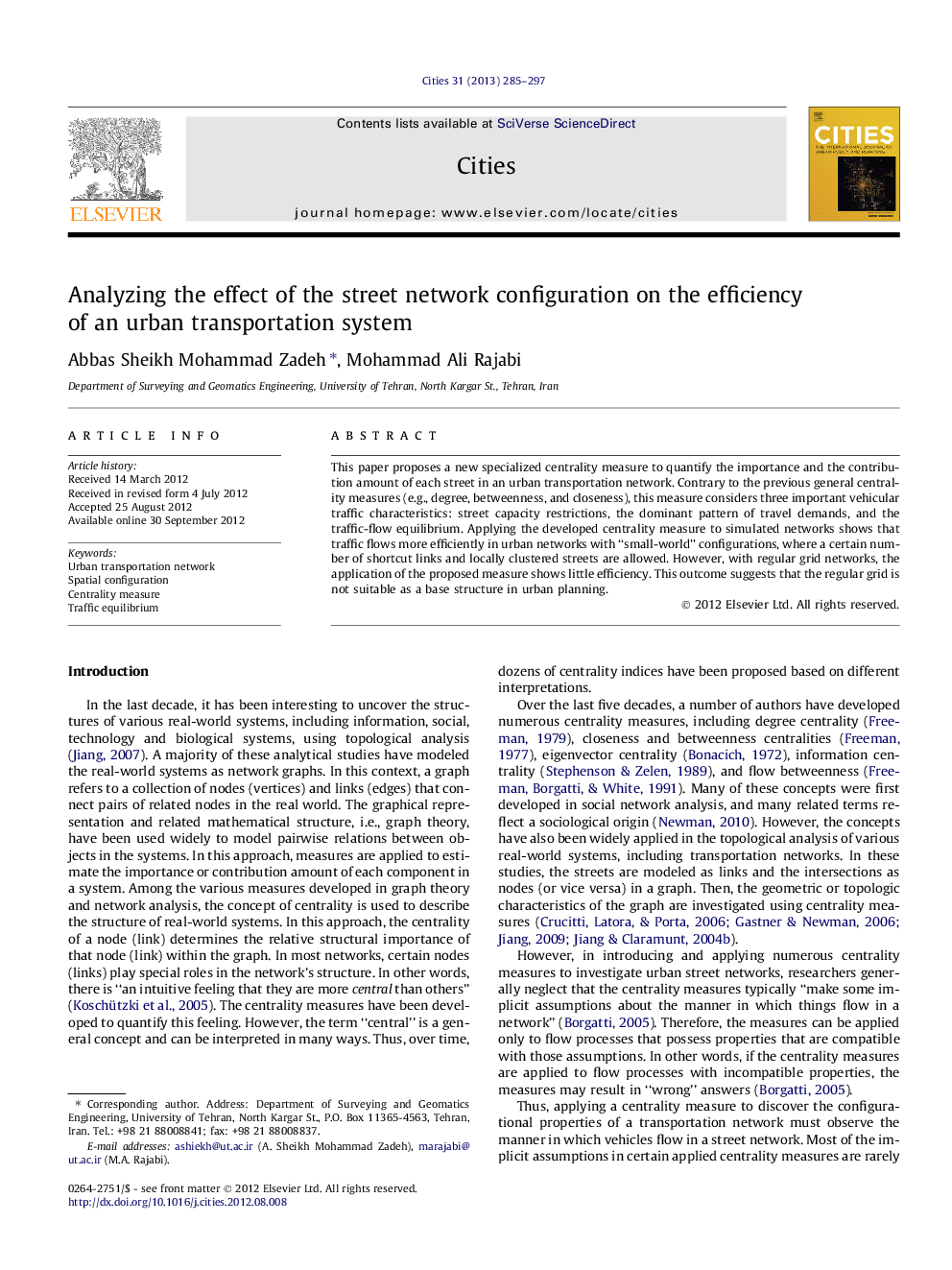| Article ID | Journal | Published Year | Pages | File Type |
|---|---|---|---|---|
| 1008524 | Cities | 2013 | 13 Pages |
This paper proposes a new specialized centrality measure to quantify the importance and the contribution amount of each street in an urban transportation network. Contrary to the previous general centrality measures (e.g., degree, betweenness, and closeness), this measure considers three important vehicular traffic characteristics: street capacity restrictions, the dominant pattern of travel demands, and the traffic-flow equilibrium. Applying the developed centrality measure to simulated networks shows that traffic flows more efficiently in urban networks with “small-world” configurations, where a certain number of shortcut links and locally clustered streets are allowed. However, with regular grid networks, the application of the proposed measure shows little efficiency. This outcome suggests that the regular grid is not suitable as a base structure in urban planning.
Graphical abstractFigure optionsDownload full-size imageDownload as PowerPoint slideHighlights► We propose a measure to quantify the importance of a street in urban transportation network. ► The measure is subject to capacity restricted streets, travel demand pattern, and traffic equilibrium. ► Networks with “Smallworld” configuration are more efficient than the regular one. ► Shortcuts and locally looped streets can improve the efficiency of urban networks.
